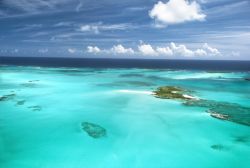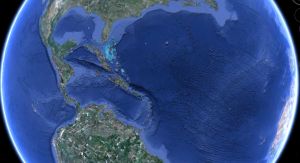
Exploring the history and experiences of mixed heritage persons and inter-racial relationships across the world

Exploring the history and experiences of mixed heritage persons and inter-racial relationships across the world
 The following countries will be covered in greater detail in this section: Cuba, Dominican Republic, Trinidad and Tobago.
The following countries will be covered in greater detail in this section: Cuba, Dominican Republic, Trinidad and Tobago.
Generally the 27 countries/territories of the West Indies or The Caribbean is usually regarded as part of North America as opposed to South or Central America. The name Caribbean came from a group of people whose origins lie in the northern coast of South America. What is not argued is that at the time of the European discovery of most of the islands of the Caribbean they were inhabited by early settlers and indigenous groups. After contact, genocide and disease led to a decline in the Native population.
Spain by virtues of the Treaty of Tordesillas with Portugal claimed the entire Caribbean but they only settled on a few islands namely Puerto Rico, Cuba, Jamaica and Trinidad. This did not remain the case for long as the British, French, Dutch and even the Danish got into the act. The West indies population exploded as the time of the transatlantic slave trade with many island's demographics changing to the point that slaves out-numbered other groups. Later on, after the ending of the slave trade, indentured labour from other continents and other forms of immigration from India, China, and other countries arriving in the 19th century added to the mix.
 Former Spanish colonies in this part of the world seems to reflect the Spanish attitude to the mixing of the races and those colonies have a higher percentage of the population who consider themselves of mixed heritage. On the other hand the other colonies have a tendency to classify themselves either European or African. This is not strictly true as the vast majority of Cubans, a former Spanish colony though later under USA influence, regard themselves as white (the Chinese were counted as white) and only 10% see themselves as black despite the fact that a large slave contingent worked on the island. Some 25% of Cubans regard themselves as Mulatto (mixed). Contrast this with Jamaica where the University of the West Indies' population estimate 76.3% of the population African descent - defined as to those who have origins mainly from Africa. Afro-European make up only about 4% of the population.
Former Spanish colonies in this part of the world seems to reflect the Spanish attitude to the mixing of the races and those colonies have a higher percentage of the population who consider themselves of mixed heritage. On the other hand the other colonies have a tendency to classify themselves either European or African. This is not strictly true as the vast majority of Cubans, a former Spanish colony though later under USA influence, regard themselves as white (the Chinese were counted as white) and only 10% see themselves as black despite the fact that a large slave contingent worked on the island. Some 25% of Cubans regard themselves as Mulatto (mixed). Contrast this with Jamaica where the University of the West Indies' population estimate 76.3% of the population African descent - defined as to those who have origins mainly from Africa. Afro-European make up only about 4% of the population.
What appears obvious in the Caribbean is that the actual classification is a matter of some choice with a tendency to the 'higher' classification of white. This may be true of some parts of South America. The USA influence in some islands suggests some of it related to US racist laws at the time. For example in the first Puerto Rican census by the United States in 1899 reported a population with over 60% classified as white, 31.9% as mixed and 6.3% as black. In 2007, three quarters regard themselves as White, 7% black and a small 4% regard themselves as mixed. Oddly enough, a mixed race person can claim to be legally white if 1 person per generation in each of the last 4 ancestors were white directly opposing the US one drop rule at the time. At one stage only white Puerto Ricans could claim US citizenship.
On the other hand in the Dominican Republic ethnic composition is 73% multiracial, primarily a mixture of European and African, 16% white, and 11% black. At least 15% of Dominicans have been proven to have Taíno (native American) ancestry. There may have been an onus to not classify yourself as black during the regime of Rafael Leónidas Trujillo, who maintained racist policies that disadvantaged the black slave descendants of largely Haitians. Haiti, that shares Hispaniola island with the Dominican Republic was the first Caribbean nation to gain independence from European powers when in 1791, a slave rebellion established Haiti as a free, black republic.
 Given the large number of ethnic identities in Trinidad and Tobago around 20% of the citizens claim a mixed ethnic heritage. The Indian infleunce is so strong that they have a name for the Indian and African mix Dougla - which is a derogatory term in India meaning half-caste. The Indian mix apparently is due in some to the anti-Indian bias in some Caribbean nations.
Given the large number of ethnic identities in Trinidad and Tobago around 20% of the citizens claim a mixed ethnic heritage. The Indian infleunce is so strong that they have a name for the Indian and African mix Dougla - which is a derogatory term in India meaning half-caste. The Indian mix apparently is due in some to the anti-Indian bias in some Caribbean nations.
Another thing of note with the West Indies is the general lack of mixes that include the native West Indian tribes reflecting the reduction of these populations at the time of colonisation and the growth in both European and African populations. However, recent genetic studies are revealing the historical proof of foreign males mating with the native islanders in most of the population and I suspect will be reveal a strong native genetic component to the people who currently see themselves as white.
Apart from that, one has to bear in mind that some people will only classify themselves as mixed if that mix occurred in the recent past i.e. parents or grandparents. After that one will assume the cultural identity of the population most appropriate to the upbringing.